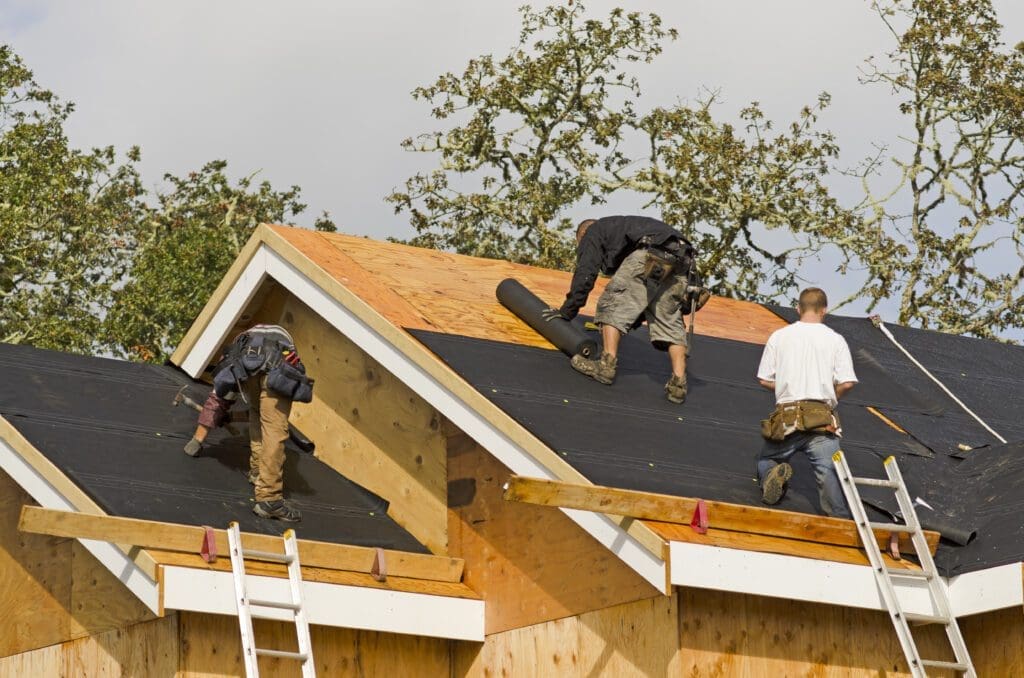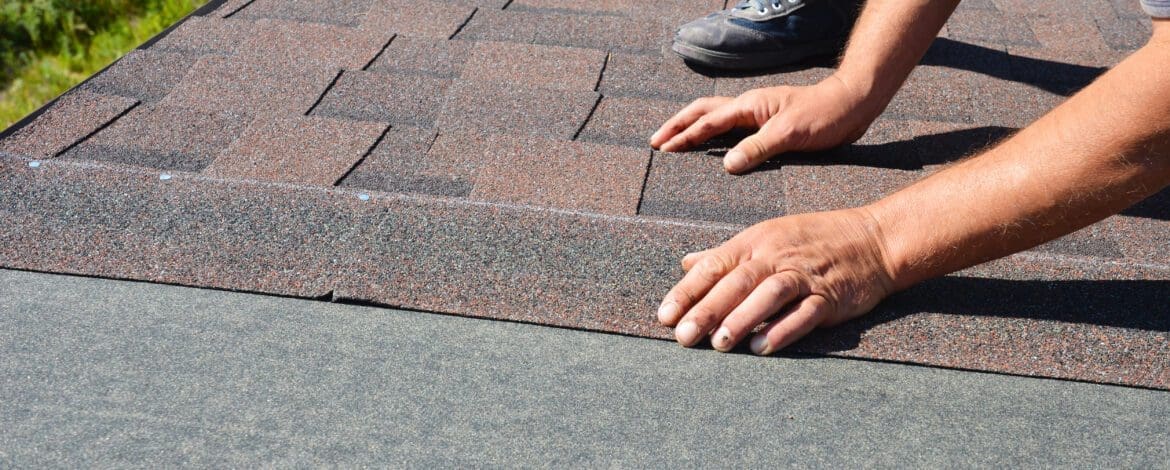Besides the top layer of roofing material on your home, which is asphalt shingles on about 70% of US homes, your roof also has underlayment. This product acts as a base layer for your top layer of roofing, and also provides a bit of extra water resistance for your home’s roof decking. For decades, asphalt saturated paper, also known as tar paper or roofing felt, was the choice. Now you have some synthetic choices as well. But what’s the best underlayment, synthetic or felt?
Let’s compare old-school roofing felt with synthetic underlayment. First, what is roofing felt? This product is about as simple as it can get: heavy paper saturated with an asphalt material. It comes in #15 and #30 grades, or weights. Roofing felt’s primary advantage is its low cost. Besides that, it really offers no advantages when compared to synthetic underlayment.
Synthetic underlayment, in contrast, is a high-tech manufactured product. You can think of it as basically a plastic material that offers multiple advantages over roofing felt: it’s waterproof, it’s stronger, installation is easier, and it’s much lighter.
Cost
Felt will cost you around $5–6 per square, installed, while synthetic will cost from $7–10 per square. A square is 100 square feet and is the commonly used term in the roofing industry. You’ll see all roofing materials prices that way.

Weight
Roofing felt is really heavy, so to make each roll manageable for workers, it has to be kept to a certain size. According to Owens Corning, one of the top manufacturers of roofing materials, their synthetic underlayment is only 25% of the weight of typical roofing felt. That means each roll can cover a lot more roof surface—450% more, they claim—and still be a manageable weight.
In fact, they claim that a typical roof of 27 square, or 2700 square feet, will need three rolls of synthetic underlayment. That same roof would need 14 rolls of roofing felt. Even though synthetic underlayment costs more up front, you’ll save some labor cost. How? Consider the workers getting materials up the ladder to the roof. When you go from 14 rolls of roofing felt to just three rolls of synthetic, you’re cutting a lot of trips up the ladder. Rolling out one roll of synthetic across a roof, rather than two or three rolls of roofing felt, also makes it easy to see the labor savings of synthetic.
Speed of installation
Thanks to the weight advantage, synthetic underlayment comes in larger dimensions. That means one roll covers more roof surface. While a typical roll of roofing felt is 36 inches wide, synthetic underlayment is often 48 inches wide and much longer than a roll of roofing felt, so it goes on faster and each roll goes farther.
Strength and Durability
Paper just can’t compare to synthetics for strength. Roofers have to walk on the underlayment after they install it, and roofing felt will tear fairly easily, especially around nails, even from workers walking on it. Those tears create the opportunity for leaks. Roofing felt will also tear from high winds, which are common in many areas. Synthetic underlayment won’t tear easily from foot traffic or high winds. GAF, another top manufacturer of roofing materials, says their Deck Armor synthetic underlayment is 600% stronger than 30-lb. felt in tear strength.
Safety
When roofing felt gets wet, it becomes fairly slippery. That’s a safety hazard for the workers, but isn’t an issue with synthetic underlayment. It’s designed to have a nonslip surface so no matter what the weather conditions are, workers will have secure footing.
Weather Resistance and Performance
Roofing felt is water resistant thanks to the asphalt that permeates the paper. But it’s not waterproof as synthetic underlayment is. Roofing felt is also fairly sensitive to sun or UV exposure and the oils can start to dry out in just a few hours of sun exposure. With sun exposure roofing felt will wrinkle and tear around fasteners, which creates a pathway for leaks, and also makes it impossible for shingles to lie flat.
As for lifespan, roofing felt should last as long as an asphalt shingle roof. In most of Florida, that’s around 20 years if you choose high-quality architectural shingles. The risk, as we noted, is apparent during the installation process. If your roof all goes on in a a day or two, and the roofing felt isn’t harmed by rain or high winds, then it’s all good. The roofing felt will not be harmed by the elements and will perform as expected.
But if the installation stretches out to a week or two and there’s some rain and wind that cause wrinkling, then your new roofing felt will be compromised. Also, if the roofing felt sits there exposed for a week or two in the hot sun drying out, it’s also compromised somewhat and will lose some water resistance.
As for synthetic underlayment, it can’t really add to the lifespan of your roof, especially an asphalt shingle roof. But since it’s so much less vulnerable than roofing felt, it doesn’t detract in the same way if it has to sit exposed to the elements for a time.
The Best Underlayment: Synthetic or Felt?
So what’s the verdict? We’d say it’s obvious that roofing felt has had its day and offers no advantages over synthetic underlayment other than a lower price tag. Even on that one advantage it’s not that far apart and the reduced labor cost for installing synthetic underlayment can make it competitive.
We’re Here When You Need Us
Any type of roofing is a system and it may seem confusing. No matter what type of roof you have, we can help you through the process. Our team has more than 40 years of experience in roofing. Give us a call at 813-373-9088, or use this form and request more information and we will contact you.





